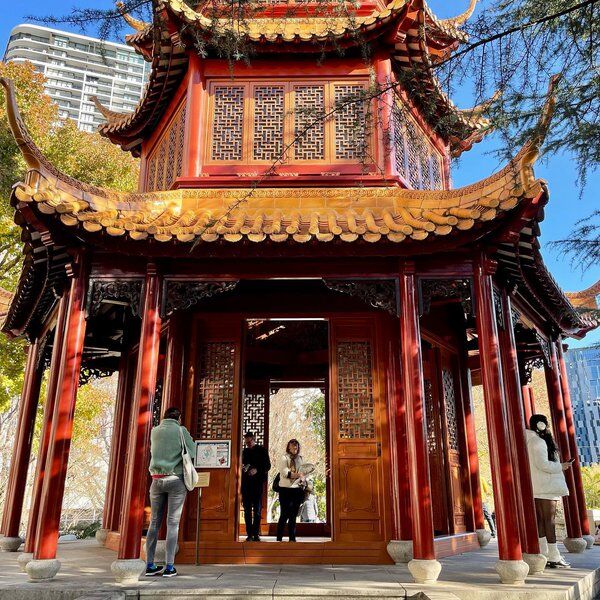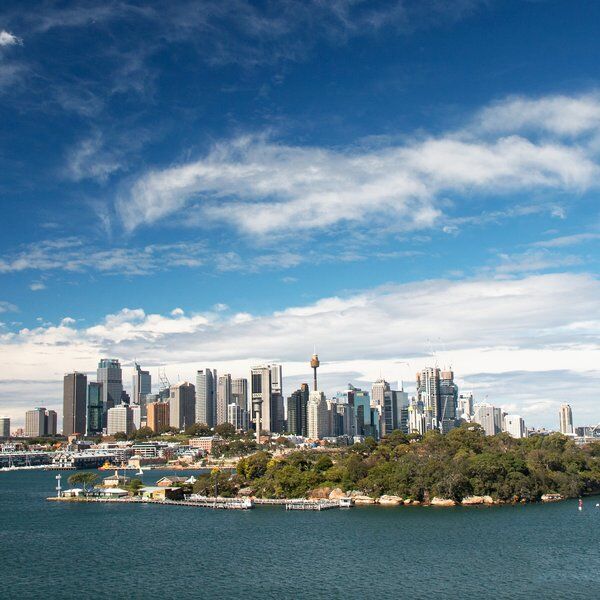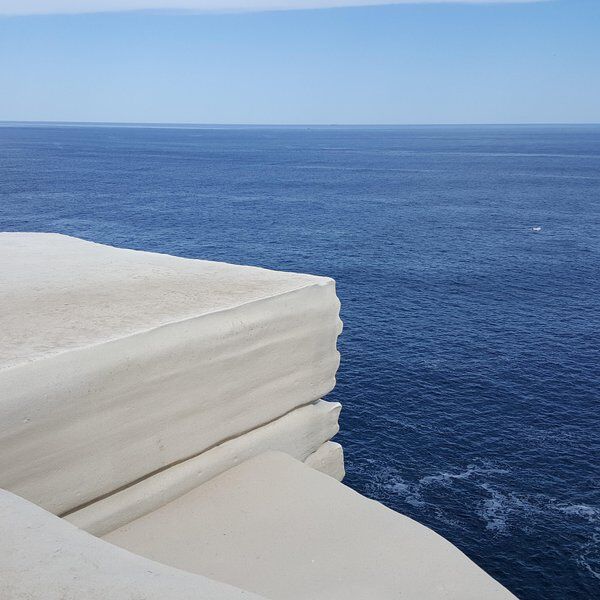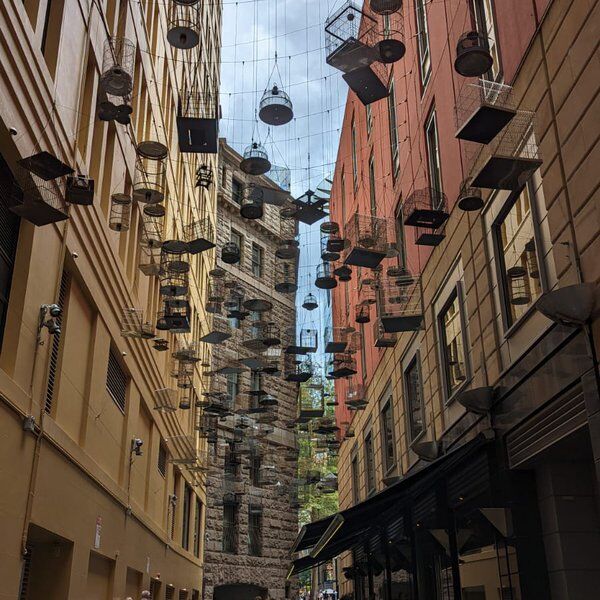Discover the Statue of Trim: Matthew Flinders Cat
Matthew Flinders Cat, Trim, was no ordinary cat. Named after a character from Laurence Sterne's novel "Tristram Shandy," Trim was a loyal companion who accompanied Flinders on his many adventures. One of which included the circumnavigation of Australia aboard the HMS Investigator from 1801 to 1803. In 1809, while held captive on the Isle de France, Flinders wrote a tribute to Trim:
“To the memory of Trim, The best and most illustrious of his race. The most affectionate of friends, faithful of servants, and best of creatures. He made the tour of the globe, and a voyage to Australia, which he circumnavigated, and was ever the delight and pleasure of his fellow voyagers.”
In 1996, the State Library of New South Wales honoured Trim’s legacy with a bronze statue sculpted by John Cornwell. Positioned on a window ledge of the Mitchell Library in Sydney, the statue is placed behind one of Flinders himself, which was erected following the donation of Flinders' personal papers to the Library by his grandson in 1925.
Trim’s popularity has since inspired the sale of merchandise at the State Library of New South Wales. Visitors can also stop at Trim’s café, named for Matthew Flinders Cat. Additionally, Trim’s adventures have made their way into literature, most notably in Australian author Bryce Courtenay’s 2002 novel, "Matthew Flinders’ Cat," where both the cat and the library statue play significant roles.
Sadly, Trim went missing after Flinders was captured by the French in Mauritius and accused of spying. However, the Matthew Flinders Cat memorial ensures that his legacy lives on.
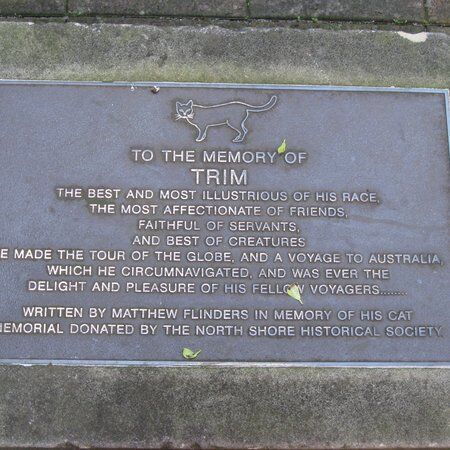
Who was Matthew Flinders?
Matthew Flinders was a famous British explorer. His contributions to mapping the Australian coastline and his encounters with various cultures and environments have left a significant imprint on the history of Australian exploration.
Flinders’ Early Career
Inspired by the adventures of Robinson Crusoe, Matthew Flinders began his naval career at the age of 15, joining the Navy as a midshipman in 1789. He served under Captain William Bligh during Bligh’s second and successful voyage to Tahiti, where Flinders perfected his navigation skills. Skills that set him up for a future as one of Britain’s most accomplished explorers.
In 1795, Flinders sailed to Sydney, where he undertook expeditions with naval surgeon George Bass. The two young explorers, both in their early twenties, explored Botany Bay, the Georges River, and Lake Illawarra using small boats no more than three metres long.
Van Diemen’s Land and Bass Strait
In 1798, Governor John Hunter appointed Flinders, then a lieutenant, to command the sloop Norfolk. With Bass, he circumnavigated Van Diemen’s Land (now Tasmania), confirming it as an island and naming the strait between it and the mainland after Bass.
After further explorations along the Queensland coast, Flinders returned to England in 1800. His published work, "Observations on the Coasts of Van Diemen’s Land, on Bass’s Strait and its Islands, and on Part of the Coasts of New South Wales," were highly regarded.
Circumnavigation of Australia
After Flinders’ book was published, he won the support of Sir Joseph Banks, who helped secure Admiralty approval for an expedition to explore the entire Australian coastline. In February 1801, Flinders, now promoted to commander, was given command of HMS Investigator. One objective of the expedition was to determine whether New Holland (western Australia) and New South Wales (eastern Australia) belonged to the same continent.
The Investigator was modified for exploration, with additional boats and copper-coated hull improvements. Flinders’ journey began in July 1801, and by January 1802, he had arrived at Point Leeuwin, Australia's southwestern tip. He explored the South Australian coast, meeting French explorer Nicolas Baudin in Encounter Bay in April 1802.

Encounters with Aboriginal Men
Two Aboriginal men, Bongaree and Nanbaree, accompanied Flinders on his journey. Bongaree, although not fluent in the languages of all the tribes they met, played a crucial role in negotiating with local tribes and helping Flinders and his men understand cultural protocols. Bongaree also became very fond of Trim during their time together, providing the cat with water from his own flask, whenever the cat requested it with a meow.
Challenges and Accomplishments
Before entering the Gulf of Carpentaria, Flinders mapped the Queensland coast in great detail. However, the Investigator's poor condition forced Flinders to return to Sydney in June 1803. Despite instances of scurvy and dysentery amongst the crew, Flinders’ journey was a navigational success as he and his companions became the first to circumnavigate Australia and present it as a single continent.
Naming the Continent
After Flinders' mapping of Australia, presenting it as a single continent, a new name was necessitated. Drawing upon the Latin term 'Terra Australis' meaning 'southern land,' Flinders proposed the name 'Australia' in his map. Although Sir Joseph Banks wanted to keep the Latin term, Flinders' continued to use 'Australia' in his book's footnote. Eventually, Governor Macquarie adopted the name 'Australia' in his correspondence, leading Britain to formally name the continent as such in 1824.
Arrested in Mauritius
In August 1803, Flinders attempted to return to England but fate had other ideas. After surviving a shipwreck on HMS Porpoise, he navigated 1,127 km back to Sydney to arrange the rescue of the survivors. He then took command of the barely seaworthy schooner Cumberland, which led him to seek help in Mauritius, unaware that England and France were at war again.
French Governor General Charles de Caen detained Flinders for six years, suspecting him of espionage despite orders from Paris to release him. During his captivity, Flinders worked on his journals and papers, using his time productively. He was finally released in June 1810, when the British fleet blockaded Mauritius.
Final Years
Eventually, Flinders returned to England in October 1810 and reunited with his wife. He dedicated his final years to setting out his expeditions and adventures on paper. This culminated in the publishing of "A Voyage to Terra Australis," which occurred the day before his death on 18 July 1814.

The Story of Matthew Flinders Cat
Trim as a Kitten
But we know what you’re thinking, where does Trim come in? Well actually Matthew Flinders’ Cat was there all along—or at least since 1799!
Trim’s mother, a pregnant cat from London, gave birth to her kittens aboard HMS Reliance, during a crossing from the Cape of Good Hope to Botany Bay, in 1799. Growing up on a ship, the kittens quickly adapted to the ship's motion, developing keen balance, an unusual indifference to water, and good survival instincts. On one occasion, Trim even fell overboard, but managed to swim back to the ship, scaling a rope to safety. Apparently, he could navigate the ship’s gangway steps faster than any crew member.
"One of the finest animals I ever saw... [his] robe was a clear jet black, with the exception of his four feet, which seemed to have been dipped in snow and his under lip, which rivalled them in whiteness. He had also a white star on his breast."

Despite his many virtues, Trim reportedly had one flaw: he was incredibly vain. Flinders observed how Trim would flaunt his white feet on the quarterdeck and paw at people to get their attention. He also performed tricks such as jumping over clasped hands and lying flat on his back until given a signal to rise and would sit in any hats left lying around.
During mealtimes Trim would sit quietly at the table, waiting for his turn to request a morsel from each person’s plate with a gentle paw. His charm usually ensured everyone obliged, and if not, he would deftly swipe a piece of meat off an unsuspecting crewman’s fork. All of these quirks, alongside his tenacity and aptitude for clearing out mice infestations, earned the black and white cat the admiration of Flinders and the crew.
A Loyal Companion
But Trim's adventures didn't end when HMS Reliance docked. Named after He went on to accompany Flinders on the HMS Investigator during his circumnavigation of Australia. Along the way he faced the same challenges as any other member of Flinders crew. For example, in 1803 Trim, aboard HMS Porpoise, was shipwrecked on Wreck Reef. But these shared experiences only deepened the bond between man and cat and Trim became a symbol of loyalty to Captain Flinders, often featuring in letters home to Flinders wife.
"Trim, like his master is becoming grey; he is at present fat and frisky, and takes meat from one's forks with his former dexterity: he is commonly my bedfellow."

One particularly difficult shared experience occurred when HMS Investigator, renamed Spyall by Flinders, ran aground on the Great Barrier Reef. Forced to abandon ship, Flinders and his crew, including Trim, swam to safety on a small island. Despite the circumstances, Trim maintained good morale amongst the stranded men during their 7-week wait for rescue.
Trim’s loyalty extended to shared imprisonment, as he accompanied Flinders in Mauritius, bringing comfort and companionship. However, their adventures came to an end when Trim failed to return from one of his outdoor explorations in 1804, with Flinders believing he was stolen and possibly eaten by a hungry slave.
After this, Flinders wrote a tribute to Trim, detailing their shared adventures and the cat’s remarkable character. This tribute, written in 1807 and later elaborated, survived among Flinders' papers and was discovered in 1971 by Australian writer Stephen Murray-Smith. It has since been published and is featured at the Matthew Flinders Cat memorial.
Creating the Statue of Matthew Flinders Cat
In 1996, outside Sydney’s Mitchell Library, a bronze statue of Flinders was installed, with a smaller bronze statue of Trim on a window ledge behind him. The statue was commissioned by the North Shore Historical Society and unveiled by Rear-Admiral David Campbell.
However, there are many tributes to Trim all over the world. These include a statue of Flinders with Trim at his feet in Flinders’ birthplace, Donington, Lincolnshire, unveiled in 2006. And, to honour the bicentenary of Matthew Flinders' death in July 2014, a life-sized statue was created by sculptor Mark Richards at Australia House in London. The statue was revealed by HRH Prince William before being moved to Euston Station, near Flinders’ original burial site. Casts of the bronze statue of Trim can also be found in Port Lincoln, South Australia, and at the Flinders University campus in Adelaide. There is also a smaller version of the statue displayed in Lincoln Cathedral.
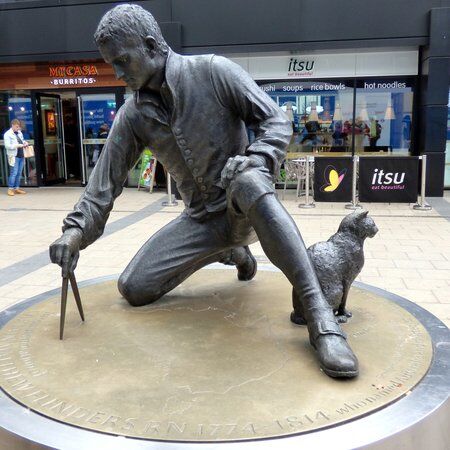
Visiting Matthew Flinders Cat
Trim’s statue is located along Macquarie Street outside the Mitchell Library in Sydney. The larger statue of Matthew Flinders is easily visible, with Trim’s statue perched on the window ledge behind it.
Interested in finding more places like Matthew Flinders Cat? Why not try one of our Scavenger Hunts in Sydney - work as a team to overcome cryptic riddles and allow yourselves to be swept off the beaten track on a journey to discover all the quirky bars and unusual sites Sydney has to offer.







